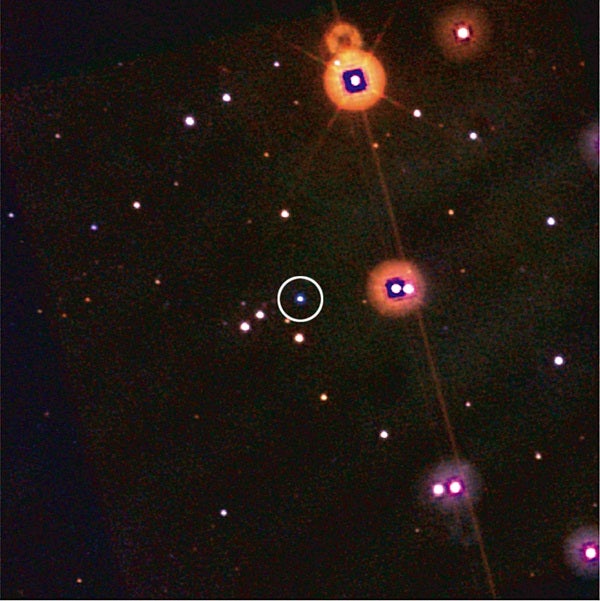Observatories around — and above — the world are training instruments on an unusual gamma-ray burst associated with what astronomers think is a brightening supernova. Only 440 million light-years away, the exploding star is the second-closest long-duration gamma-ray burst (GRB) on record. The suspected supernova, which may become bright enough to be seen in large amateur telescopes, is expected to reach maximum brightness in the next week.
NASA’s Swift satellite clued astronomers into the burgeoning blast. On February 18, Swift detected an odd, long-lasting flash of gamma-rays from a star-forming galaxy in Aries. The burst, designated GRB 060218, lasted 2,000 seconds — about 100 times longer than typical bursts associated with supernovae. It was also 25 times closer. And, in another first, radio telescopes picked up the burst’s afterglow the day Swift detected it.
“This is the type of unscripted event in our nearby universe that we hoped Swift could catch,” says principal investigator Neil Gehrels at NASA’s Goddard Space Flight Center in Greenbelt, Maryland.
The burst was surprisingly dim by Swift standards. Scientists aren’t sure whether the burst’s unique properties represent a new phenomenon or a never-before-seen side view of a GRB.
“There are still many unknowns,” says Swift mission director John Nousek at Penn State University in State College, Pennsylvania. “This could be a new kind of burst, or we might be seeing a gamma-ray burst from an entirely different angle.” The standard theory for gamma-ray bursts is that the high-energy light is beamed toward Earth. “Had this been farther away, we would have missed it,” he says.
Using the European Southern Observatory’s Very Large Telescope in Chile, a team at Italy’s National Institute for Astrophysics (INAF) has watched the afterglow of this burst grow brighter in visible light. This brightening, along with other telltale spectral characteristics in the light, strongly suggests that an underlying supernova is unfolding.
“We expected to see the typical featureless spectrum of a gamma-ray burst afterglow, but instead we found a mixture between this and the more complex spectrum of a supernova similar to those generally observed weeks after the gamma-ray burst,” explains Nicola Masetti of INAF’s Institute for Space Astrophysics and Cosmic Physics (IASF) in Bologna. “A supernova must
be in the works.”
Based on the amount of certain chemical elements, Masetti thinks this could be a Type Ic supernova. If this turns out to be the case, it represents the fatal collapse of a massive star and possibly the formation of a black hole. The dead star’s expanding shell of debris is so dense most of its visible light is trapped. As the shell expands and cools, it will emit more light. Astronomers think the supernova will reach maximum brightness in a week or so, after which it will begin to fade.
If Masetti’s team is right, this event offers scientists an unprecedented start-to-finish view of a supernova at radio through X-ray wavelengths.
Amateur astronomers in dark skies might be able to see the explosion with a 16-inch telescope as the supernova rises to an expected 16th-magnitude during the next week.










